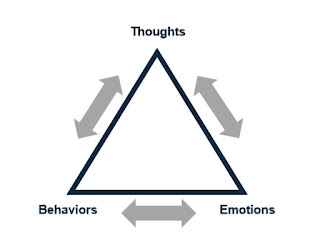Patterns can be likened to the habits and routines we engage in daily. They encompass our actions, such as brushing our teeth each morning, as well as our emotional responses and behaviors, like feeling anxious when meeting new people. While some of these patterns are positive and constructive, others can create problems. For example, getting frustrated whenever someone makes a comment you find unpleasant or perpetually delaying essential tasks can be detrimental.
These patterns significantly influence our behavior, reactions, and interactions with the world around us. Patterns can be both physical—like routines in daily life—and emotional, becoming deeply embedded until they feel automatic. Often, we may not realize the extent to which we've established these routines.
The empowering news is that we can learn to modify and improve our negative patterns, fostering personal growth in the process! This realization puts the power back in our hands, showing us that we are capable of steering our lives in the direction we desire.
Steps to Change Unhelpful Patterns
1. Observe the Pattern:
Start by becoming aware of the behaviors you frequently repeat. For instance, do you notice a consistent feeling of upset when someone playfully teases you?
2. Take a Moment to Reflect:
When you find yourself slipping into the same pattern, pause to reflect. Ask, “What’s causing me to feel this way?”
3. Learn from the Experience:
Consider what this feeling or behavior can teach you. Perhaps it's indicating that you need to assert yourself more instead of remaining silent.
4. Experiment with New Approaches:
Swap out the old habit for a new one. For example, when you feel anger rising, try taking deep breaths and calmly sharing your feelings instead.
5. Practice Regularly:
Life will challenge you to see if you’ve truly changed. If you manage to stay composed when teased, it’s not just a sign of your growth, but also a testament to your determination and the progress you've made. This sense of accomplishment will fuel your motivation to continue on this path of transformation!
Wisdom from the Upanishads
A teaching from the Upanishads states, “What you do and believe shapes your life.” This emphasizes that maintaining a positive mindset and kind actions can lead to positive outcomes. Conversely, clinging to negative habits can trap you in a cycle of recurring challenges, hindering your progress in life.
Remember, you possess the capability to alter any pattern. It requires dedication and patience, but the results will be rewarding. This reassurance that change takes time and patience will help you stay calm and focused on your journey of growth and better choices!
Story of Anu's Transformative Journey
Anu found herself on her couch, staring at a pile of unfinished books and a heap of laundry. Each day felt like a monotonous repeat—overwhelmed by procrastination, plagued by self-doubt, and engaged in unnecessary disputes with loved ones. She felt caught in a never-ending cycle, unable to break free from the frustration.
After a particularly challenging day at work, during which she reacted sharply to her best friend over something trivial, Anu stumbled upon an old notebook. Skimming through its pages, she encountered a quote :
“What you do and believe shapes your life.” This sparked a realisation within her.
Compelled by this new insight, Anu resolved to take action. Her initial step was :
to observe the patterns that hindered her progress. In the days that followed, she diligently noted instances when she felt anxious or angry. To her surprise, recurring themes emerged—procrastination when studying, frustration in conversations, and moments of self-doubt before crucial meetings.
Upon recognizing these patterns, Anu took a moment to reflect whenever they cropped up. Instead of responding with anger when her partner teased her, she paused to take a deep breath and asked herself, “Why does this bother me?” Each moment of reflection provided a glimmer of clarity.
The next phase involved learning and altering her reactions. Rather than allowing anger to surface, Anu practised expressing her emotions calmly. When procrastination set in, she would set a timer for just ten minutes to start a task, often finding herself able to continue once she began.
Anu is committed to the daily practice of these new habits. Initially, it felt unusual, almost as if she were learning to ride a bike for the first time. However, gradually, moments of calm began to outnumber her frustrations. She felt empowered, realising she could reshape her responses.
As weeks passed, Anu recognized a significant transformation. She was no longer a captive of her old patterns. Conversations with her partner deepened, and her work became more fulfilling as she approached tasks proactively rather than deferring them. With each improved response, she experienced a sense of pride and accomplishment, feeling as if she were rewriting her own narrative.
One sunny afternoon, as Anu sat in a coffee shop flipping through a now half-finished book, a smile crossed her face. She had succeeded in breaking free from the negative patterns that had constrained her for so long. With newfound assurance, she knew she was no longer ensnared in a loop; instead, she was on a journey of growth and clarity.
Every challenge she faced reminded her that transformation starts with her own choices.
Anu had learned to liberate herself and inspired those around her to embark on similar journeys. Thus, her path of self-discovery continued, with each day presenting a new opportunity to create the life she truly wanted.
Anu realized that the power to change her life had always resided within her. All it required was the bravery to notice, pause, learn, and act.





No comments:
Post a Comment